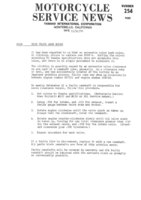estcstm3
XS650 Addict
Hi All,
I found this xs650 valve adjustment video online. Seems very straightforward and easy but two things I have read contradictory statements here.
1) The gentleman said you can rotate the crank(?) either direction, I thought we could only rotate counterclockwise, however I am not sure the reasoning behind this
2) Does it make sense to not look at the timing marks?
I found this xs650 valve adjustment video online. Seems very straightforward and easy but two things I have read contradictory statements here.
1) The gentleman said you can rotate the crank(?) either direction, I thought we could only rotate counterclockwise, however I am not sure the reasoning behind this
2) Does it make sense to not look at the timing marks?

